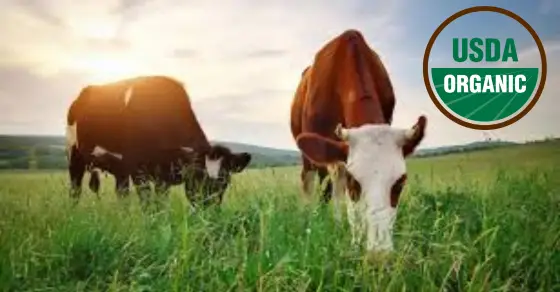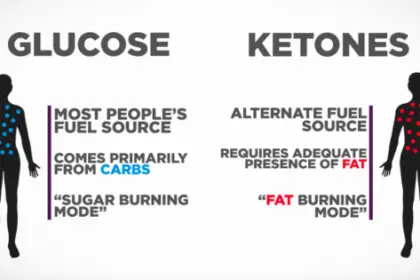The Truth About Grass-Fed vs. Organic Beef: What’s Really Healthier?
When it comes to choosing the healthiest beef for you and your family, labels like “organic” and “grass-fed” can get confusing. Most people assume that “organic” means “healthiest,” but when it comes to beef, that’s not always the case. There’s an important difference between organic beef and grass-fed beef, and understanding these distinctions can help you make smarter choices for your health.
Let’s dive into the differences, the misconceptions, and the truth about what these labels really mean—so you can choose the best beef option every time.
Organic Beef: Not Always What You Think
“Organic” sounds like the gold standard. After all, USDA-certified organic beef means the cows were raised without synthetic hormones, antibiotics, or genetically modified feed. That’s a great start. But organic beef does not guarantee the cows were raised on their natural diet of grass.
In fact, many organic cows are still fed organic grains—like organic corn and soy. While these grains may be free from pesticides and GMOs, they are not species-appropriate for cows, which are ruminants naturally designed to graze on grass. Grain feeding—whether organic or not—can cause inflammation in the animal, disrupt digestion, and ultimately lead to a less healthy cow.
The result? Organic beef that may still carry an inflammatory fat profile and reduced nutrient density compared to beef from cows that are grass-fed and grass-finished.
Grass-Fed Beef: Closer to Nature
“Grass-fed” means the animal was raised on a diet of grass, which is what cows are biologically meant to eat. This results in beef that is not only better for the cow, but also for the consumer. Grass-fed beef typically contains:
- Higher levels of omega-3 fatty acids
- More conjugated linoleic acid (CLA), a fatty acid linked to improved immunity and fat metabolism
- More antioxidants, such as vitamin E
- A healthier ratio of omega-6 to omega-3 fats
Unlike organic beef that may still be grain-fed, grass-fed beef reflects a cow’s natural diet and lifestyle. That said, not all grass-fed beef is created equal.
Grass-Fed vs. Grass-Finished: Why It Matters
Here’s the twist—“grass-fed” doesn’t always mean the cow only ate grass its whole life.
Many producers use the term “grass-fed” to mean the cow started on grass but was finished (fattened up in the final months) on grains. This is a common practice because grain-finishing helps add weight and marbling, which appeals to mainstream taste and market demands. But it also means the cow’s diet was compromised at the end of its life, when nutrient accumulation is at its peak.
That’s why looking for both “grass-fed” and “grass-finished” is important. Grass-finished means the cow ate grass its entire life, with no grain interruptions. This results in the purest nutrient profile and the healthiest beef.
What About Organic Grass-Fed Beef?
Now, here’s the best-case scenario: beef that is grass-fed, grass-finished, and certified organic.
This means:
- The cow was never given hormones or antibiotics
- Its pasture and feed were free of GMOs, pesticides, or synthetic fertilizers
- It was raised on a species-appropriate, all-grass diet for its entire life
This combination is rare and often comes at a premium price—but it’s the gold standard in terms of health and purity.
Health Ranking: Comparing Your Beef Options
Let’s break down the different types of beef and rank them from healthiest to least healthy:
1. Grass-Fed, Grass-Finished & Organic – Ultimate Option
- Raised entirely on pasture
- Fed only organic grass, with no pesticides, GMOs, or antibiotics
- Highest in nutrients, cleanest option
- Best omega-3 to omega-6 ratio
- Top tier for inflammation reduction and overall health
2. Grass-Fed & Grass-Finished (Non-Organic) – Second Best
- Still raised on natural diet of grass only
- May not be certified organic, but still avoids grain feeding
- Very high in nutrients, healthy fats
- Slight risk of pesticide or herbicide exposure depending on pasture quality
3. Grass-Fed (But Grain-Finished) – Decent Option
- Started on grass, but finished on grains
- Nutrient profile not as strong as fully grass-finished
- Still better than purely grain-fed conventional beef
- Potentially inflammatory due to final grain diet
4. Organic (But Grain-Fed) – Healthier Than Conventional, But Still Flawed
- No antibiotics, hormones, or GMOs
- Likely fed organic corn or soy, which are still inflammatory to cows
- Nutrient profile better than conventional beef, but not optimal
- Misleading for consumers who assume organic means grass-fed
Final Thoughts: What to Look For
When shopping for beef, don’t be misled by the “organic” label alone. Organic is not a guarantee of quality when it comes to the cow’s diet. If your goal is optimal health, you want beef from cows that lived the way nature intended—grazing freely on grass, without being fattened up with grains at the end.
The best bet? Look for beef that is labeled grass-fed, grass-finished, and organic. If that’s hard to find (or out of budget), aim for grass-fed and grass-finished first. You’ll still reap the majority of the health benefits from a truly grass-based diet.
🥩 Grass Fed Beef Options
If you’re looking for trustworthy sources of grass-fed beef products—especially convenient, protein-packed snacks—check out:
PaleoValley Grass-Fed Beef Jerky – Visit Here!
- Made from 100% grass-fed and grass-finished beef
- No antibiotics or hormones
- Naturally fermented for gut-friendly probiotics
- Free from sugar, soy, and gluten
Click here to get 15% off Paleovalley Beef Jerky!
Lineage Provisions Beef Jerky – Visit Here!
- Sourced from regenerative farms
- Grass-fed and grass-finished
- Minimal ingredients with no artificial additives
- High-protein, clean energy snack
- Has added organ meats for a rich source of bioavailable nutrients for organ health including heart and liver organ meats, which directly support our liver and heart health.
Click here to visit Lineage Provisions!
Use the discount code: healthywildfree to get 10% off your order!
Both of these options make it easy to enjoy the benefits of high-quality grass-fed beef on the go, while supporting sustainable farming practices that prioritize animal health and environmental well-being.
By choosing grass-fed, grass-finished beef, you’re not just making a healthier choice for yourself—you’re also supporting a food system that honors animals, the planet, and future generations.
Recommended Reading:





